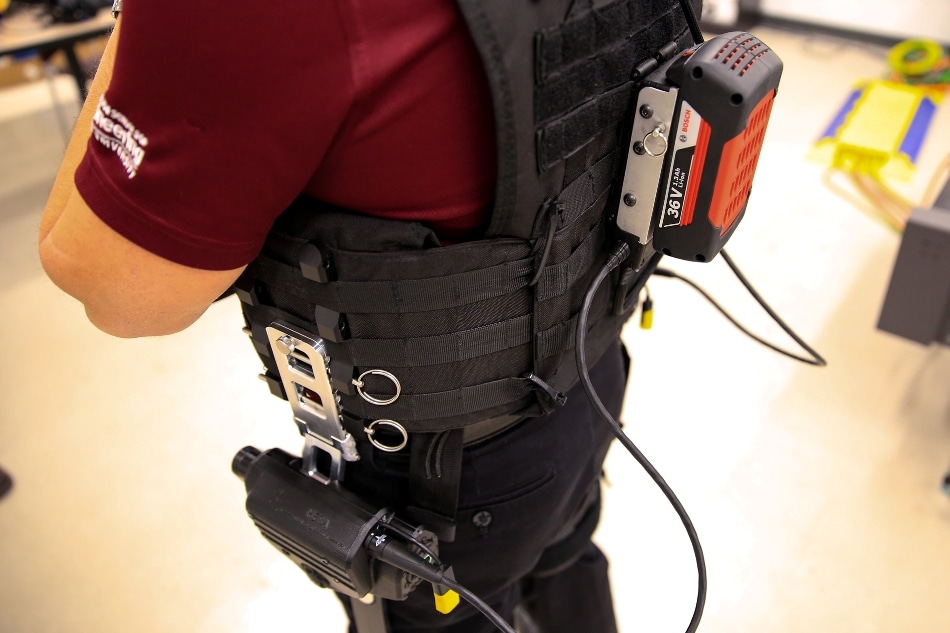Apr 17 2017
 ASU Professor Tom Sugar demonstrates his exoskeleton device in the lab. Credit: Arizona State University
ASU Professor Tom Sugar demonstrates his exoskeleton device in the lab. Credit: Arizona State University
Human beings need not consider robots as their mortal enemy. Some robots are in fact designed so that they can bring about improvements in human life, like helping humans carry out their jobs or helping overcome disabilities.
Tom Sugar, a professor in the Ira A. Fulton Schools of Engineering at ASU’s Polytechnic Campus, assumes that robots are capable of enhancing the human condition. He has developed systems to cool a soldier and has also developed robotic prosthetics that help people lead normal lives. Professor Tom Sugar is currently working on developing systems that can help humans execute their jobs.
Developing such robots does not imply taking away the job, but to enable the human to work. For instance, a warehouse worker is capable of walking up to 18 miles per day doing his or her job, Sugar stated. A device to help this person has been developed by Sugar.
Several exoskeleton enthusiasts will be meeting up in Phoenix to talk about and demonstrate a few of their latest devices at WearRAcon17 from April 19–21. These enthusiasts, from government, industry and academia, focus on developing and commercializing robotics that humans wear.
Industry has talked to us about improving the quality of work, which can mean reducing fatigue or helping you work faster, but it can also mean reducing health-care costs. People are getting foot, shoulder or hip injuries by doing specific, repetitive tasks. If we can meld the ability of the human to make judgments, and change and solve problems, but then working directly with the machine to lift things and move things, we are making them more successful, more happy.
Professor Tom Sugar, Ira A. Fulton School's of Engineering, ASU
A single exoskeleton developed at Sugar’s labs will help that warehouse worker beat fatigue. This is a lightweight (6.5 pounds total, including battery) device that users can strap to their legs or put on their backs.
It works by giving you a push at the right time. On your hips they assist the leg to go up into the air, and when your foot is on the ground they assist your leg pushing back to propel you forward. It reduces metabolic cost and fatigue. Most of the time, people walk 5 to 10 percent faster with the device.
Professor Tom Sugar, Ira A. Fulton School's of Engineering, ASU
The device is not cumbersome even though it is strapped to the user, and this is considered to be an attractive feature of the device.
You don’t really notice it until you take it off; then you think, ‘I’m missing something'. That’s when you know you’ve got it right.
Professor Tom Sugar, Ira A. Fulton School's of Engineering, ASU
WearRAcon17 will take place at the Hyatt Regency in Phoenix from April 19 to 21. The show will be hosted by Sugar and Joseph Hitt, of the Wearable Robotics Association, and a presentation will also be made by Sugar.
Exoskeleton - ASU Polytechnic Campus